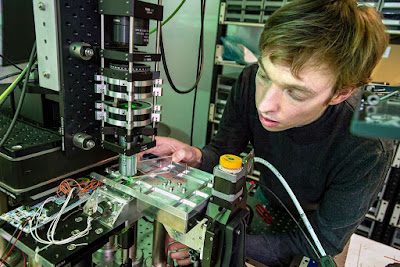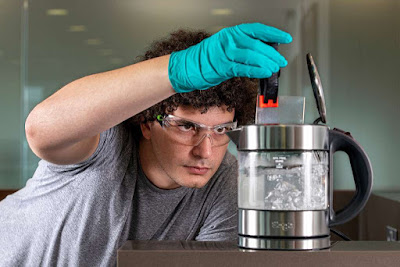Project Silica: storing data on glass according to Microsoft
Boiling water, microwaves, stripping ... Microsoft engineers have done the most extensive testing to damage this new storage medium, but this glass plate could be the ultimate solution for storing data for centuries.
Microsoft has taken another step in its Project Silica, recording the 1978 film Superman on a glass plate. The announcement might seem anecdotal: it took a glass plate the size of a coaster for a single film, while a microSD card has a much higher capacity, while being about 30 times smaller. However, the Microsoft project is not trying to solve a problem of capacity, but of sustainability.
Almost all of today's media are struggling to withstand time and elements, whether older media, such as photos or books , or newer ones such as optical discs, magnetic hard drives or flash memories. The problem is that to ensure longer-term storage, the film industry converts digital works to analog format and then divides the image into the three primary colors that are then used to create three black and white filmstrips. more durable than color films whose pigments degrade too quickly.
 |
| A Microsoft optical scientist is loading a piece of glass into a system using optics and artificial intelligence to extract and read data stored on glass. © Jonathan Banks, Microsoft. |
Current storage technologies too ephemeral
Microsoft predicts that the mass of data stored online will reach 100 zettabytes, or 100 billion terabytes, in 2023. Current storage media offer only limited storage time, and today's industry is managing this massive amount of data. regularly renewing the media used. Hard drives can fail in three to five years, while magnetic tapes used for computer archives offer only five to seven years of durability. Warner Bros., who owns the Superman movie rights, creates copies of his archives every three years to avoid problems.
Microsoft has decided to change the technique. Rather than working on current technologies in an attempt to make them more sustainable, the firm chose to start from a promising material and develop a new storage technology. With Project Silica, the firm opted for a quartz glass support. The project has just reached a new milestone by recording a complete film, 75.6 GB of data, on a glass plate 75 mm wide and 2 mm thick.
 |
| Cooked, boiled, washed, demagnetized, brushed with glass wool ... enough to demonstrate the strength and durability of Project Silica. © Jonathan Banks, Microsoft. |
A technology to archive data for centuries
This technology works with three-dimensional pixels, called voxels. Each voxel is encoded by laser pulsations that physically deform the glass. It is therefore an archiving technology only, read-only. The researchers managed to create 100 layers of voxels in a 2mm thick glass plate. The reading of the plate, however, is a little more complex and relies on artificial intelligence, able to recognize the patterns created by the polarized light that passes through the glass. The reading however remains very fast.
These quartz glass plates are extremely durable. The research team put them to the test, baking them in the boiling water and in the microwave. They demagnetized and even scoured them with glass wool and found no data loss. They do not require any special storage conditions, temperature or humidity, and could hold data for centuries
WHAT YOU MUST REMEMBER
Creating the most resilient storage medium possible is Microsoft's challenge.
The firm opted for glass with a three-dimensional engraving.
It is indeed an archival medium since only reading is then possible.













No comments:
Post a Comment